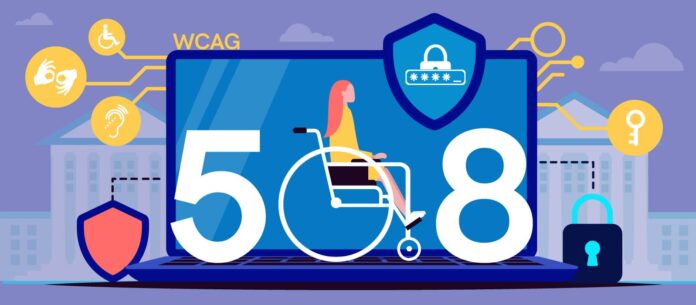
When you design and develop a training program, there are lots of elements to be considered. Engaging learning content, personalized learning, and curating the content are very important, but the one most important factor you must ensure is whether training aligns with accessibility compliance standards or not. No matter how engaging your content is, it doesn’t matter if your training program does not cater to everyone.
The federal government has set standards on certain guidelines on how training should be accessible to everyone to create an equitable environment. Of all the guidelines, section 508 compliant is very important as it states that all the learning platforms and related websites must ensure every learner can interact with the learning content. This 508 compliant guideline ensures learners with hearing loss, visual disabilities, etc are taken care of. Thus, organizations also must ensure that they cater to every employee in the organization. In this article, we will discuss how you can create an effective training program that is 508 compliant. To learn more about tools that you may need, check out this list of 508 compliant learning management systems.
1. Provide Subtitles:
For all the video lectures you provide, ensure you provide subtitles to it. Subtitles help someone who has a visual impairment to understand what’s going on by reading it. All your learning materials must have a visual and audio track running simultaneously. With subtitles, your learners no longer need headphones to carefully listen to the audio. These days, with technology, subtitles can be created automatically; so you must have subtitles at any cost as there is no excuse for not adding them.
2. Leave Out Navigation Links:

This is a must-have feature that you must have depending on the training setup. If you can skip the navigation links, it becomes easier for your learners to scroll and access the menu through a keyboard rather than using a mouse. This can be extremely useful for learners who have a motor impairment. If your learning program has a large menu, then skipping navigation links is very important as learners can easily access the content.
3. Alternate Text Options:
Alternative video and audio text options are very important as it helps your learners to understand the content in audio or video format files easily. Even though they cannot see or hear through properly, it helps them to understand the context. Usually, alternative text is a small and precise description that is provided for audio and video files. Most of the eLearning tools offer the clients to include this feature in their course content.
4. Timeouts:
Your learning programs must provide enough time for the learners to carefully understand and comprehend what is there. Although it might be useful to have a fixed and strict timeline for each module so that your learners are more attentive to learning. But, to cater to learners with disabilities, you must provide enough time to go through the materials and understand them.
5. A Variety of Choices:

Color allocation, page layouts, color schemes, etc can help the learners with visual impairments to have a positive learning experience. The selection of the correct color scheme and page layouts will make a whole lot of difference and contribute to seizure avoidance.
6. Make Use of Charts and Graphs:
You can make your learning program more accessible by representing the content in the form of charts and graphs. You can summarize the graphs and charts by providing voice narrations or alternate text options so that they are 508 compliant. But, ensure you make the graphs and charts easy to understand by making proper labels so that your learners can easily understand everything.
7. Include Text Transcripts:
The learning modules include narrators and voice actors for certain parts. The producers of your learning modules may choose to add written transcripts for audio recordings to meet Section 508. People who are deaf or have some difficulty hearing can access the information included in audio files through text transcripts. At the same time, narrations can also be of assistance to students who are visually impaired.
8. Try to Avoid Objects on the Screen That Flicker:

Some persons are more susceptible to seizure activity when exposed to particular colour schemes and flicker patterns on the screen. Websites are required to be designed in such a way as to prevent the screen from flickering at a frequency that is greater than 2 Hz and less than 55 Hz.
9. Voice Over:
Voice over functions, which loudly read out and describe the information presented on the screen, should be included in any content meant for those who have visual impairments. Make sure the learner is able to choose the pace at which the narrative is delivered for the most excellent possible results.
10. Taking Care of the Links:
When creating resources that will be housed in connected and sub-linked portions of the course, consider utilizing various ways. A person who has visual impairments, for instance, will not profit from directions such as “Click here to learn more…” since they would not know where to click in order to follow those instructions. Rather than using the term Click, you should describe the link and use the phrase Select. For instance, “Select the History link to learn more about the numerous historical sites located around the park.”
Conclusion:
No matter which training program you create, ensure it caters to every employee in your organization. Accessibility compliance is nothing but creating programs that appeal to everyone, if not you might have to face a lot of issues. If you provide your learners with enough tools and options to learn, then they are more engaged; or else, they feel unmotivated to learn and all your efforts in creating the training program will be in vain. Thus, understand the 508 compliant standards and create an equitable learning culture.








